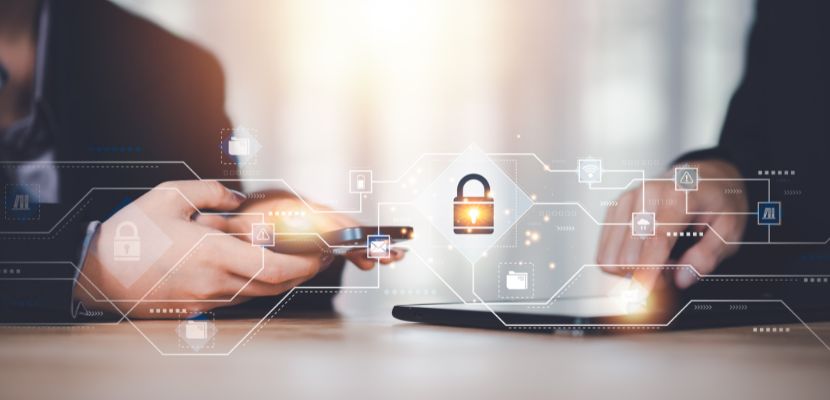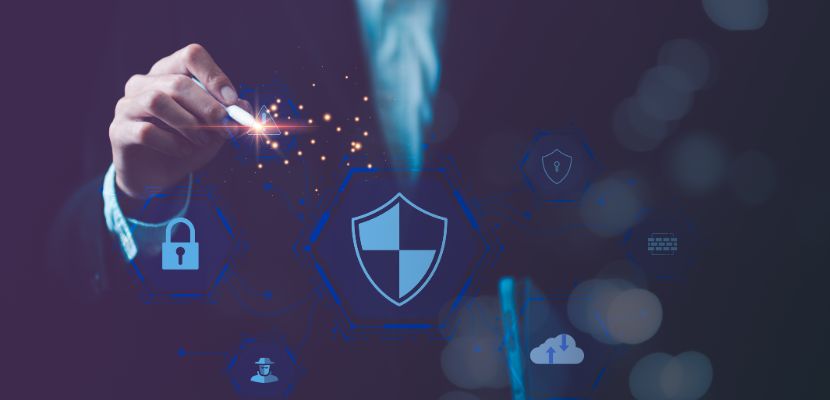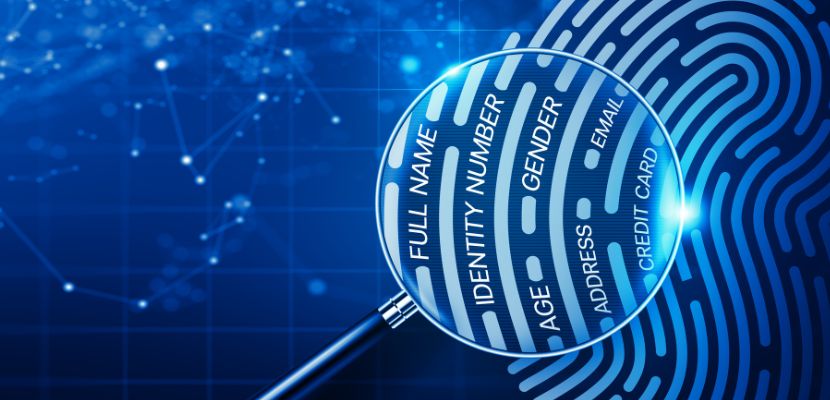Identity-proofing services help verify that a person is who they claim to be before granting access to systems, services, or benefits.

What Are Identity-Proofing Services?
Identity-proofing services are a set of processes and technologies used to confirm an individual’s claimed identity with a high degree of confidence. These services operate by evaluating various types of evidence, such as government-issued documents, biometric data, or historical records, to determine whether the person attempting to access a service is genuinely who they claim to be. The goal is to establish trust in digital and physical environments, particularly where security, privacy, or compliance are critical.
Identity-proofing is often a prerequisite step for granting access to sensitive systems, issuing credentials, or allowing participation in regulated activities. It plays a key role in reducing identity fraud, meeting legal or industry-specific verification requirements, and enabling secure transactions in sectors such as finance, healthcare, government, and online services.
Types of Identity-Proofing Services
Here are the main types of identity-proofing services, along with explanations of how each works:
- Document-based verification. This method involves analyzing scanned images or photos of official identity documents (e.g., passports, driver’s licenses, or ID cards). The system verifies authenticity using document templates, security features (such as holograms or watermarks), and consistency with global databases.
- Biometric verification. Biometric identity proofing uses physical characteristics such as facial recognition, fingerprint scanning, or iris recognition. Often paired with liveness detection, it ensures the person is present and not using a static image or deepfake.
- Knowledge-based verification (KBV). This approach requires users to answer questions based on personal history, such as previous addresses, loan amounts, or other data that only the legitimate user would likely know. It is often used in financial services but is becoming less popular due to an increase in data breaches.
- Database or credit bureau checks. Identity information provided by the user is cross-referenced with external databases or credit bureaus. These checks validate names, social security numbers, addresses, and other identifying details, confirming the person’s existence and consistency of records.
- Mobile and SIM verification. This method validates identity by checking mobile device data, such as SIM card registration details, device metadata, or carrier information. It’s frequently used in mobile-first regions and for account recovery workflows.
- Social identity and digital footprint analysis. Some services assess a user’s online presence, social media activity, or device behavior to verify identity. Machine learning models evaluate patterns that match genuine user behavior, helping detect fake or synthetic identities.
- In-person verification. For high-assurance scenarios, identity proofing may occur face-to-face with a trained agent or at a kiosk. This often complements digital methods and ensures compliance in regulated sectors like immigration or legal processes.
Identity-Proofing Services Levels of Assurance

Levels of assurance (LoA) in identity-proofing services refer to the degree of confidence that a person’s claimed identity has been properly verified. These levels help organizations determine how rigorous an identity-proofing process needs to be based on the sensitivity of the service being accessed or the risk of identity fraud.
LoA frameworks are often defined by government standards, such as NIST SP 800-63-3 (used in the U.S.) or eIDAS (in the EU), and are typically tiered to reflect increasing identity verification requirements.
At the lowest level, minimal checks are performed, perhaps only collecting basic self-asserted information without any external validation. This level is suitable for low-risk transactions, such as subscribing to a newsletter.
A moderate level of assurance introduces validation against external records or documents. Identity proofing may involve checking an ID against known databases or verifying possession of a phone number or email address. This is often used for general consumer services where some risk is present but not critical.
At the highest level, strict identity verification is required. This typically includes multi-step processes involving biometric checks, document verification, and live or supervised identity confirmation. High assurance levels are mandated for access to sensitive systems, financial services, government portals, or healthcare records.
Each level corresponds to a balance between usability, privacy, cost, and security. Organizations choose the appropriate LoA based on the potential consequences of identity fraud, regulatory obligations, and user expectations.
The Identity-Proofing Process
The identity-proofing process is a structured sequence designed to verify that an individual truly is who they claim to be. While the exact steps vary depending on the method and assurance level required, the general process typically includes the following key stages:
- Identity claim submission. The individual initiates the process by providing identifying information. This may include full name, date of birth, address, phone number, email, and sometimes a national identifier (such as a social security number or personal ID number). This claim forms the basis for verification.
- Evidence collection. To support the identity claim, the person submits one or more pieces of evidence. This can include scanned or photographed documents (e.g., passport, driver’s license), biometric data (such as a selfie for facial comparison), or knowledge-based responses. The type of evidence collected depends on the assurance level required.
- Evidence validation. The submitted information and artifacts are checked for authenticity and consistency. For documents, this might involve verifying expiration dates, security features, or formatting. For biometric data, it includes ensuring liveness and matching it against the document or an existing reference. External data sources may also be used to validate details against trusted records.
- Identity resolution and corroboration. This step links the evidence to a unique, real individual. It may include cross-checking with databases to ensure the person exists, that their identity hasn’t been used fraudulently, and that the data points (name, address, DOB) consistently relate to a single person.
- Decision and confidence scoring. Based on the results of the validation and resolution, the system or reviewing agent makes a determination about the identity claim. This may result in a binary outcome (verified/not verified) or a confidence score representing the likelihood of a valid match. Thresholds are often set depending on the required level of assurance.
- Audit and recordkeeping. For regulatory and risk management purposes, a record of the identity-proofing process is securely stored. This includes the steps taken, sources checked, and outcomes. The data may also be used for future re-verification or compliance audits.
Identity-Proofing Use Cases

Here are key use cases where identity-proofing services play a vital role, along with explanations of how and why they are applied:
- Financial services and banking. Banks and fintech companies use identity-proofing to comply with know your customer (KYC) and anti-money laundering (AML) regulations. This ensures that customers opening accounts, applying for loans, or performing high-risk transactions are legitimate and not involved in fraudulent or criminal activity.
- Government services and e-government portals. Access to digital government services, such as filing taxes, applying for benefits, or renewing identification, requires strong identity verification to prevent fraud, protect citizen data, and ensure that services are delivered only to eligible individuals.
- Healthcare access and medical records. Identity-proofing is used in healthcare to verify patients’ identities before granting access to electronic health records (EHRs), telemedicine platforms, or prescription services. This protects sensitive health information and ensures accurate treatment.
- Remote workforce and employee onboarding. Companies hiring remote employees use identity-proofing during onboarding to confirm the new hire’s identity, especially in distributed or global teams. This helps prevent impersonation, credential fraud, and insider threats.
- Online education and exam proctoring. Educational institutions and certification bodies verify the identities of students and test-takers in remote settings to prevent cheating and credential fraud. Identity-proofing ensures that exams and coursework are completed by the right person.
- Telecommunications and SIM registration. Telecom providers may be required to verify the identity of customers when issuing SIM cards or mobile plans to comply with national regulations and prevent fraudulent usage or criminal activity through anonymous numbers.
- Access to high-value digital services. Online platforms that deal with large transactions, such as cryptocurrency exchanges, investment platforms, or luxury marketplaces, use identity-proofing to prevent fraud, ensure legal compliance, and protect against identity theft.
- Travel and border control. Airlines and immigration authorities use identity-proofing for online check-in, e-visas, and automated border control. This supports secure, efficient travel while meeting national security and immigration policy requirements.
- Age verification for restricted content or products. Websites and retailers offering age-restricted goods (like alcohol, tobacco, gambling, or adult content) use identity-proofing to verify the age of users and ensure compliance with legal age limits.
- Fraud prevention in ecommerce. Online retailers implement identity-proofing to detect and block fraudulent transactions, especially for high-value goods or new customers. This helps reduce chargebacks, protect sellers, and increase consumer trust.
What Are the Benefits and the Challenges of Identity-Proofing?
Identity-proofing plays a critical role in establishing trust in digital and physical interactions, helping organizations confirm that users are who they claim to be. While it offers significant benefits, such as enhanced security, fraud prevention, and regulatory compliance, it also presents challenges related to user experience, privacy, and implementation complexity.
Identity-Proofing Benefits
Here are the main benefits of identity-proofing:
- Fraud prevention. Identity-proofing helps detect and block impersonation, synthetic identities, and stolen credentials before they can be used to commit fraud. This protects organizations from financial loss, account takeovers, and reputational damage.
- Regulatory compliance. Many industries, such as finance, healthcare, and telecommunications, are legally required to verify user identities under frameworks like KYC, AML, HIPAA, or eIDAS. Identity-proofing enables compliance with these laws and reduces the risk of legal penalties.
- Enhanced security. By verifying users before granting access to sensitive systems or services, identity-proofing adds a critical layer of defense. It reduces the attack surface and limits unauthorized access, especially in zero trust environments.
- Trust and reputation. Reliable identity verification builds trust with users, customers, and partners. It signals that the organization takes security seriously and safeguards its platforms, which can enhance brand reputation and customer loyalty.
- Remote onboarding enablement. Identity-proofing allows secure, digital onboarding without requiring physical presence. This is essential for remote workforces, online banking, telemedicine, and global customer acquisition.
- Reduced operational risk. By ensuring that only verified individuals interact with internal systems, identity-proofing lowers the risk of insider threats, data breaches, and access errors that could disrupt business operations.
- Scalability and automation. Modern identity-proofing platforms automate verification processes, allowing organizations to scale their services globally without sacrificing security or compliance.
- Improved user experience. When implemented with user-friendly tools like biometric scans or real-time document checks, identity-proofing offers a fast, seamless verification process that balances security with convenience.
Identity-Proofing Challenges
Here are the main challenges associated with identity-proofing:
- Balancing security and user experience. Strong identity-proofing often involves multiple verification steps, which can frustrate users or lead to drop-offs during onboarding. Striking the right balance between robust security and a smooth, low-friction experience is a persistent challenge.
- Privacy and data protection concerns. Identity-proofing requires collecting and processing sensitive personal data, such as biometric information or government IDs. Ensuring compliance with data protection laws (e.g., GDPR, CCPA) and building user trust in how data is stored, shared, and used is critical and complex.
- Fraud and spoofing techniques. Attackers continuously develop new ways to bypass identity-proofing measures, including using deepfakes, synthetic identities, or stolen documents. Keeping pace with evolving fraud tactics requires constant investment in threat detection and technology updates.
- Access and inclusion limitations. Not all users have access to the required documents, devices, or connectivity needed for digital identity-proofing. This can lead to exclusion, especially among underserved populations, the elderly, or individuals in low-connectivity regions.
- False positives and false negatives. Errors in matching or verification can lead to legitimate users being rejected (false negatives) or imposters being incorrectly accepted (false positives). These inaccuracies impact service access and trust in the system.
- Integration and scalability issues. Deploying identity-proofing solutions that integrate smoothly with existing systems and scale across geographies, languages, and regulatory environments can be technically challenging, especially for large or global organizations.
- High costs and operational overhead. Implementing and maintaining advanced identity-proofing systems is costly, particularly when biometrics, human review, or third-party data services are involved. Cost efficiency becomes a concern at scale.
- Regulatory and compliance complexity. Different jurisdictions have varying requirements for identity verification, especially in finance, healthcare, and public services. Staying compliant with these diverse and changing regulations adds legal and operational complexity.
What Is the Future of Identity-Proofing Services?
Identity-proofing services are shaped by the growing demand for secure, seamless digital experiences and the increasing sophistication of fraud tactics. As more services move online, identity-proofing is expected to become faster, more intelligent, and deeply integrated into user workflows.
Biometric technologies, especially those using facial recognition, voice, or behavioral traits, will see wider adoption due to their convenience and high accuracy. At the same time, advances in artificial intelligence and machine learning will enhance fraud detection capabilities, enabling systems to analyze subtle risk signals in real time.
Privacy-preserving technologies such as decentralized identity (DID) and verifiable credentials are also gaining traction, giving users greater control over their personal data while still meeting assurance requirements. Regulatory pressures and user expectations will push organizations to adopt these more transparent, user-consent-driven approaches.
Cross-border interoperability, mobile-first verification, and continuous identity assurance (rather than one-time checks) will further define the next generation of identity-proofing. Ultimately, the future lies in solutions that are secure, scalable, inclusive, and built with user trust at the center.